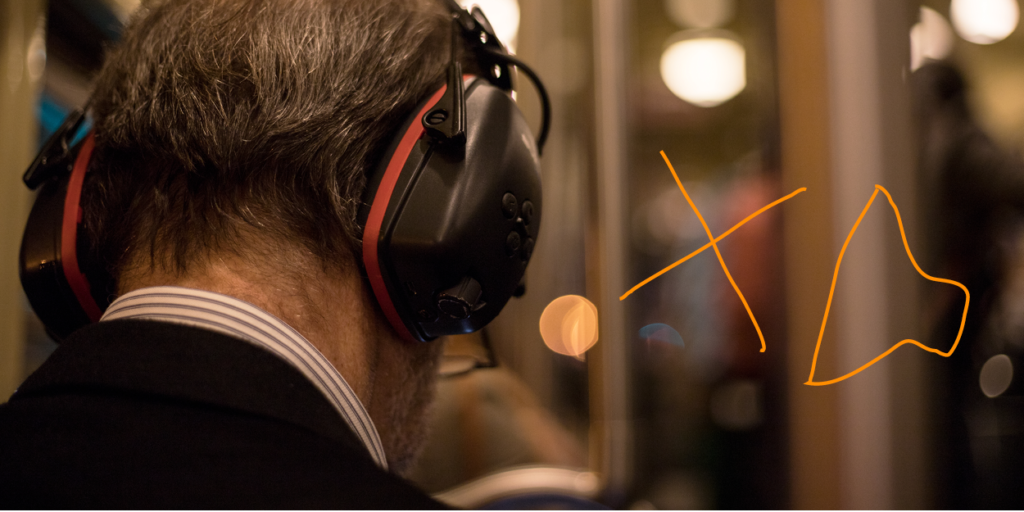
I spend a lot of my time working with and learning from great leaders. I enjoy being inspired by ordinary people achieving extraordinary things. Recently I have been reminded of a seemingly ordinary leadership skill that, when done well, achieves extraordinary results. Listening. Yes listening, not strategic thinking nor innovation (as much as I value these too) but the humble art of listening. In fact, I argue that strategic thinking and innovation will be greatly enhanced by listening.
Tune In
In simple terms, listening is tuning in; not just to the conversation, but to the individual. It is putting yourself and your self-interest aside, and focusing on the person you are conversing with. It is being observant and attentive to body language and assessing how comfortable the individual is in their situation. A head shake does not always mean no, and a nod doesn’t always mean yes. It is recognising the emotions they are exhibiting and even more importantly the ones they are trying to mask. It is not just listening to what is being said, it is tuning in to what isn’t.

We live in a society saturated by technology. There’s a deluge of 24-hour news, instant updates, emails, text messages, social media feeds, blinking lights. Waves of data-driven distractions are crashing against the shores of our minds. We have become so good at tuning in to the immediacy of our devices, that we can easily tune out when we’re in actual, real life conversations. In an attempt to get more in touch, we’ve lost touch. Sociologist Sherry Turkle has spent her life researching the effects of technology on the quality of conversations and relationships. She observes that we now turn to our phones or technology instead of each other and consequently are losing the capacity to feel empathy. In light of this challenge, leaders need to be able to clearly demonstrate empathy. An email will not always suffice. Nor a phone call, or a text message. Listening is not only about words.
Not too long ago, I sat with a colleague who genuinely listened to me. They listened, I mean really tuned in, to my experiences, my concerns, and some challenges that I’ve had with a certain project. It was incredibly powerful to be able to verbalise my frustrations and feelings and aspirations without judgment and consequently for me to recognise what then needed to be done. Not only did they present me with valuable advice, but they gave me time. I was not a machine. It was enabling and inspiring and beautifully timed.
The Impact of the Non-Listener
So, what is the impact when leaders don’t listen? I see two main consequences:
- The first is dishonest communication. Dishonest communication arises as a leader continually shuts down, interrupts and dismisses outsider input, this educates the other party to stop challenging and contributing. The team will begin to share what they believe will be accepted rather than what they really think, and what may actually be best.

- The second consequence comes directly from the first; you limit group decision making. As leaders fail to listen to a variety of opinions from the team they can easily reduce creativity and productivity in the workplace. When they reject other people’s feedback, and rather just regurgitate their own thoughts and ideas, diversity disperses, and the full brain power of the team diminishes. Lisa Gansky used the fantastic expression ‘breathing your own exhaust’. That sums this point up perfectly.
Leaders, the people in your team will have different viewpoints to you. Unlock their potential by listening carefully to what they bring and could bring to the workplace. There is a huge opportunity for new, innovative concepts and diversity of thought. Let’s embrace this diversity, or else we risk losing it. If we want higher performance we need higher skills in listening.
Stop and Check
Another aspect of deep listening is how it helps a person to feel valued. I recall an experience I had when I was working with a colleague on a project, and it became apparent that something was wrong. The colleague hadn’t said anything about what was bothering her, but I could just tell that she wasn’t entirely comfortable. I was unsure whether I had inadvertently upset her, or whether it was to do with the project we were working on, I just knew that she wasn’t happy; so, I stopped what I was doing and I checked. Very few words were spoken from either of us, but a lot was positively communicated. She never disclosed what it was that was troubling her, nor did I need to know but she did know I was there to help if she needed it. We found a way to connect with very few words, and in some circumstances, this is the best type of communication. Listening resembles observance. It is learning how to read people and their emotions, and it is being present when they need you to be.
What Listening Leaders Do
So, what can we do to become better listening leaders?
- Turn off and tune in. Make sure there is time in your schedule and in your day without your phone. When conversing with others do not have your phone present, although not physically using it your mind will become preoccupied with what you could be doing on your mobile device, which will therefore limit your capability to sincerely and genuinely listen.
- See the human behind the mask. Recognise that they are a person, they are not simply a cog in the machine. They are a living, breathing individual with real and raw emotions. Recognise that they have hopes and fears, concerns and aspirations, times when they’re not okay and times when they are overjoyed. When the work façade drops, tune in to their emotions and respond with empathy.
- Open up by follow-up. There is something powerful about asking questions beyond what was expected. Become engaged and interested in what you are being told, value the person and what they are telling you. Be the one to continue the conversation through a genuine desire to speak to the person, and a sincere desire to know more about them. As Tony Salvador, senior principal engineer at Intel, in his TED Talk ‘The Listening Bias’ so perfectly put it: “we need to release our biases, we have to release our preconceptions, we have to start every conversation fresh… we have to be vulnerable. We have to listen to ideas that we may not like and entertain them, and struggle with them, and keep them in our heads for a period of time until we develop a mutual understanding.” When someone disagrees with you, or presents you with an alternative method of work, stop, ask, explore, rather than defend.
- The eyes have it. This is more than just eye contact. Adam Anderson, a Professor of Human Ecology, found that you can interpret a person’s emotions by analysing the expression in their eyes. Of his research he says: “When looking at the face, the eyes dominate emotional communication. The eyes are the windows to the soul likely because they are first conduits for sight. Emotional expressive changes around the eyes influence how we see, and in turn, this communicates to others how we think and feel.” Part of reading body language is also learning to read what a person’s eyes are telling you, this comes from connecting with them emotionally. Become familiar with searching for a person’s true feelings within their eyes.
Effective, genuine listening can strengthen team decision making and boost engagement. I know I can do better, but I’m more interested to know what do you think?
